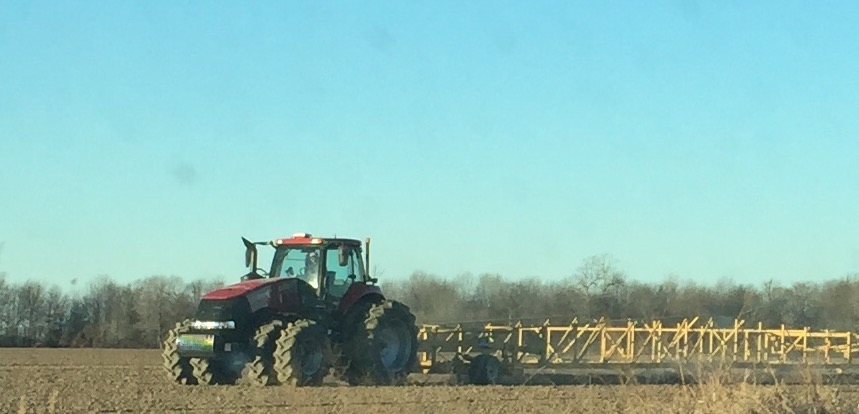Arkansas dries out, gives farmers a chance for fieldwork
By Mary Hightower
U of A System Division of Agriculture
Fast facts:
- Arkansas farmers doing field prep ahead of planting
- Field work takes priority over repairs in Prairie Co.
(353 words)
(Newsrooms: with downloadable art
Prepping Lonoke Co field - www.flickr.com/photos/uacescomm/24941168775
Field rows in NE Arkansas - www.flickr.com/photos/uacescomm/24575049769)
LONOKE, Ark. – As the calendar counts down to spring, Arkansas farmers are taking advantage of late winter dry weather to get some field work done ahead of planting.

“We were not able to do much fall tillage, so farmers are trying to catch up and take advantage of the dry weather,” Keith Perkins, Lonoke County extension agent for the University of Arkansas System Division of Agriculture, said on Wednesday.
Despite spring-like high temperatures that followed the Jan. 21-22 snowfall, many fields were still too wet to work, thanks to an abundance of flood-making precipitation in November and December. Stuttgart saw 11.11 inches of rain in November, Keiser 10.41 inches. Jonesboro accumulated 12.12 inches. Dardanelle in the Arkansas River Valley saw more than a foot of rain in December, 7.87 inches above the norm.
In Prairie County, “we have a few farmers tilling the soil where fields were rutted during the later harvest,” said Brent Griffin, Prairie County extension staff chair for the University of Arkansas System Division of Agriculture. “Some land leveling is being done where people still have some money to spend.”
In Phillips County on the Mississippi River, “the work seems to be temperature dependent,” said Robert Goodson, county extension agent for the Division of Agriculture. “As long as the weather is warm and sunny there are a few acres being tilled. There are more acres, though, that have been sprayed with an herbicide for burndown, but again, this is based on temperature.
“But just wait ‘til this cold spell is over, because by then a lot of people will be itching to get started on field work for this year,” he said.
Dark clouds
However, the sunny skies belie the feelings of some farmers headed into the 2016 growing season. With low commodity prices and and increasing input costs, the ability to save dollars wherever possible has the highest priority.
“It’s very dismal across the Grand Prairie,” Griffin said. “Growers I spoke with said, ‘It is cheaper to go ahead and prepare the seedbed than to continue working in the shop and spending money like going out of style on repairs’."
For more information about crop production, contact your county extension office or visit www.uaex.uada.edu.
Pursuant to 7 CFR § 15.3, the University of Arkansas System Division of Agriculture offers all its Extension and Research programs and services (including employment) without regard to race, color, sex, national origin, religion, age, disability, marital or veteran status, genetic information, sexual preference, pregnancy or any other legally protected status, and is an equal opportunity institution.
# # #
Media Contact: Mary Hightower
Dir. of Communication Services
U of A Division of Agriculture
(501) 671-2126
mhightower@uada.edu
Related Links